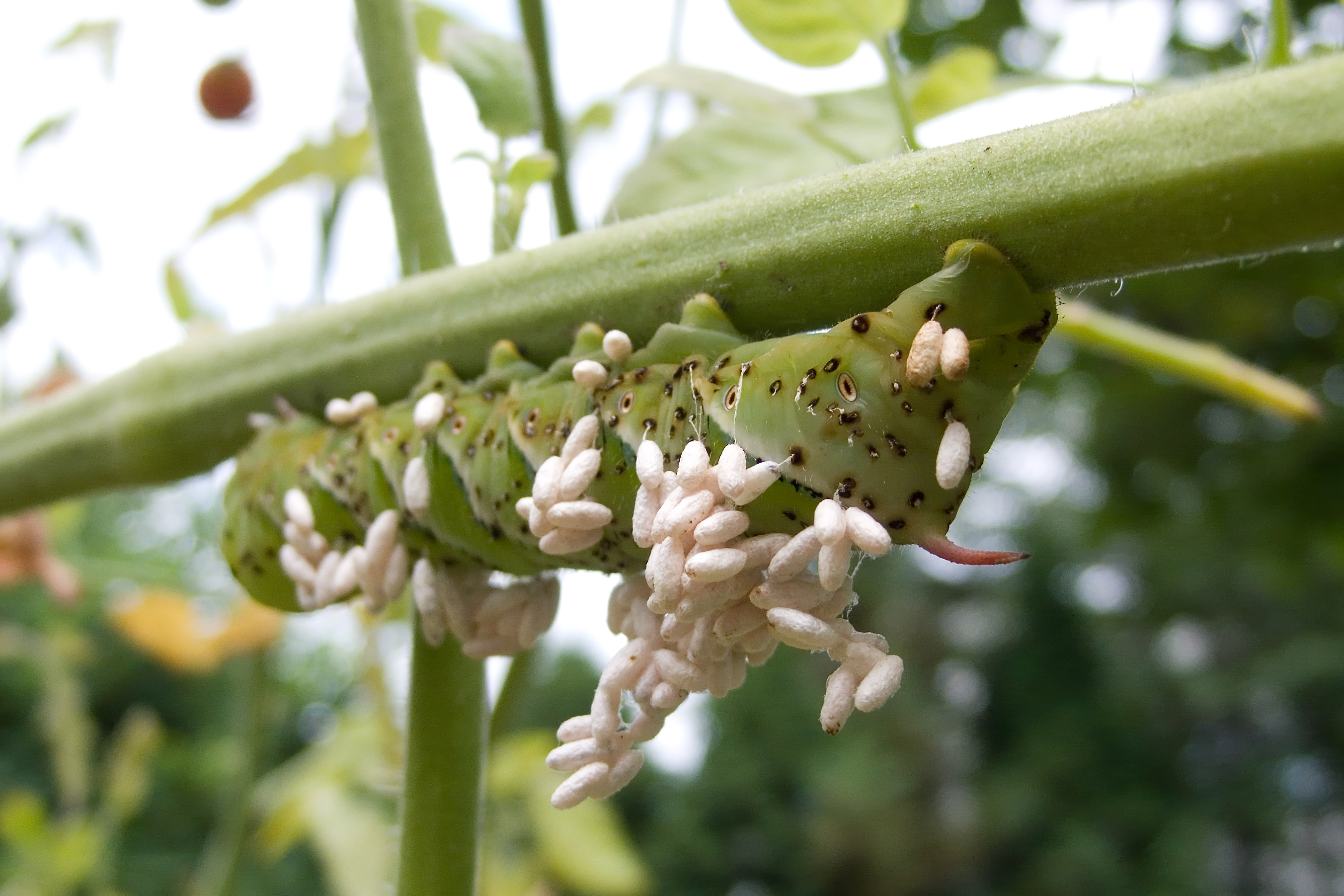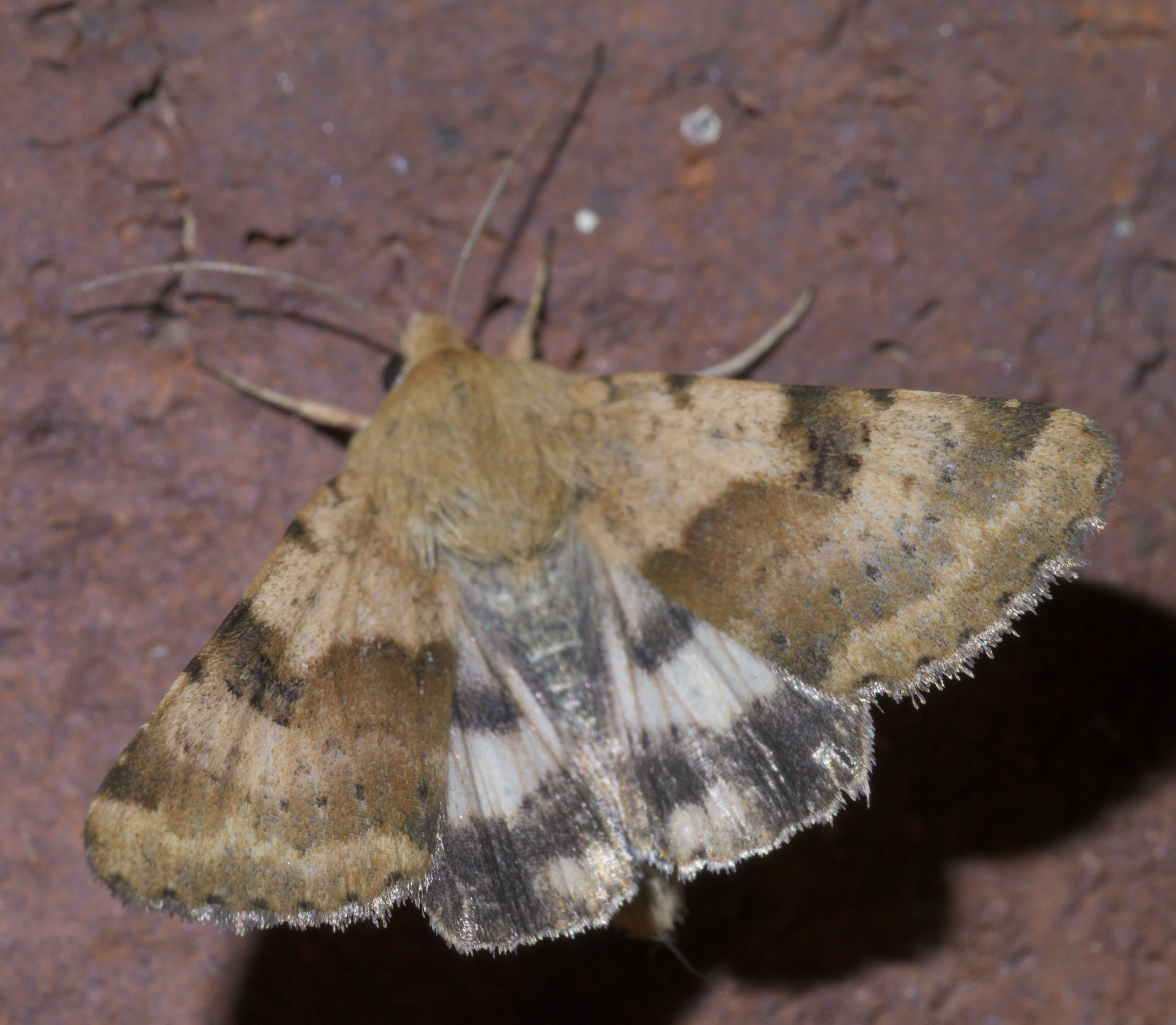|
Heliothis Nubigera
''Heliothis nubigera'', the eastern bordered straw, is a species of moth of the family Noctuidae. It is found in arid areas in the Palearctic realm. Technical description and variation The wingspan is 35–40 mm. Forewing greyish ochreous; reniform stigma dark grey, attached to the grey costal median spot; orbicular annular with grey centre; outer line lunulate dentate, the teeth whitish, separated by a brown shade from the subterminal line; hindwing pearly white with broad blackish outer border, containing a double whitish blotch between veins 2 and 4; veins and cell spot dark; fringe white. Biology Adults are on wing year round and there are probably two generations. Larva red-brown, dorsal line darker, subdorsal band alternately black and white; a diffused brown sublateral band. The larvae are polyphagous on various wild herbaceous plants. Recorded food plants include ''Zygophyllum'', globe thistles (''Echinops'' species), honeysuckle (''Lonicera'' species), Mediterran ... [...More Info...] [...Related Items...] OR: [Wikipedia] [Google] [Baidu] |
Gottlieb August Wilhelm Herrich-Schäffer
Gottlieb August Wilhelm Herrich-Schäffer (17 December 1799 – 14 April 1874) was a German entomologist and physician. He was born, and died, in Regensburg. Herrich-Schäffer studied and collected particularly butterflies and moths ( Lepidoptera). He was chairman of the Regensburg Botanical Society () from 1861 to 1871, and was awarded an honorary citizenship of Regensburg in 1871. He wrote ''Systematische Bearbeitung der Schmetterlinge von Europa'' between 1843 and 1856, one of the most influential works on the higher classification of Lepidoptera of the 19th century. Many of the lepidopteran higher taxa recognized today were defined in this work for the first time. He based his classification mostly on wing venation. Parts of his collection went to Otto Staudinger at the Museum für Naturkunde in Berlin and M. J. Bastelberg at the Zoologische Staatssammlung München. Many Microlepidoptera in his collection were given to Ottmar Hofmann (1835–1900) at the Natural History M ... [...More Info...] [...Related Items...] OR: [Wikipedia] [Google] [Baidu] |
Zygophyllum Dumosum
''Zygophyllum dumosum'' (syn. ''Tetraena dumosa''), the bushy bean-caper, is a species of flowering plant in the family Zygophyllaceae, native to Egypt, the Sinai Peninsula, and the Levant. It is a dominant shrub in the highlands of the Negev Desert The Negev or Negeb (; he, הַנֶּגֶב, hanNegév; ar, ٱلنَّقَب, an-Naqab) is a desert and semidesert region of southern Israel. The region's largest city and administrative capital is Beersheba (pop. ), in the north. At its southe .... References dumosum Flora of Egypt Flora of Sinai Flora of Palestine (region) Flora of Lebanon Plants described in 1849 {{Rosid-stub ... [...More Info...] [...Related Items...] OR: [Wikipedia] [Google] [Baidu] |
Moths Of Europe
Moths are a paraphyletic group of insects that includes all members of the order Lepidoptera that are not butterflies, with moths making up the vast majority of the order. There are thought to be approximately 160,000 species of moth, many of which have yet to be described. Most species of moth are nocturnal, but there are also crepuscular and diurnal species. Differences between butterflies and moths While the butterflies form a monophyletic group, the moths, comprising the rest of the Lepidoptera, do not. Many attempts have been made to group the superfamilies of the Lepidoptera into natural groups, most of which fail because one of the two groups is not monophyletic: Microlepidoptera and Macrolepidoptera, Heterocera and Rhopalocera, Jugatae and Frenatae, Monotrysia and Ditrysia.Scoble, MJ 1995. The Lepidoptera: Form, function and diversity. Oxford, UK: Oxford University Press; 404 p. Although the rules for distinguishing moths from butterflies are not well es ... [...More Info...] [...Related Items...] OR: [Wikipedia] [Google] [Baidu] |
Moths Of Asia
Moths are a paraphyletic group of insects that includes all members of the order Lepidoptera that are not butterflies, with moths making up the vast majority of the order. There are thought to be approximately 160,000 species of moth, many of which have yet to be described. Most species of moth are nocturnal, but there are also crepuscular and diurnal species. Differences between butterflies and moths While the butterflies form a monophyletic group, the moths, comprising the rest of the Lepidoptera, do not. Many attempts have been made to group the superfamilies of the Lepidoptera into natural groups, most of which fail because one of the two groups is not monophyletic: Microlepidoptera and Macrolepidoptera, Heterocera and Rhopalocera, Jugatae and Frenatae, Monotrysia and Ditrysia.Scoble, MJ 1995. The Lepidoptera: Form, function and diversity. Oxford, UK: Oxford University Press; 404 p. Although the rules for distinguishing moths from butterflies are not well establishe ... [...More Info...] [...Related Items...] OR: [Wikipedia] [Google] [Baidu] |
Moths Of Africa
Moths are a paraphyletic group of insects that includes all members of the order Lepidoptera that are not butterflies, with moths making up the vast majority of the order. There are thought to be approximately 160,000 species of moth, many of which have yet to be described. Most species of moth are nocturnal, but there are also crepuscular and diurnal species. Differences between butterflies and moths While the butterflies form a monophyletic group, the moths, comprising the rest of the Lepidoptera, do not. Many attempts have been made to group the superfamilies of the Lepidoptera into natural groups, most of which fail because one of the two groups is not monophyletic: Microlepidoptera and Macrolepidoptera, Heterocera and Rhopalocera, Jugatae and Frenatae, Monotrysia and Ditrysia.Scoble, MJ 1995. The Lepidoptera: Form, function and diversity. Oxford, UK: Oxford University Press; 404 p. Although the rules for distinguishing moths from butterflies are not well esta ... [...More Info...] [...Related Items...] OR: [Wikipedia] [Google] [Baidu] |
Moths Described In 1851
Moths are a paraphyletic group of insects that includes all members of the order Lepidoptera that are not butterflies, with moths making up the vast majority of the order. There are thought to be approximately 160,000 species of moth, many of which have yet to be described. Most species of moth are nocturnal, but there are also crepuscular and diurnal species. Differences between butterflies and moths While the butterflies form a monophyletic group, the moths, comprising the rest of the Lepidoptera, do not. Many attempts have been made to group the superfamilies of the Lepidoptera into natural groups, most of which fail because one of the two groups is not monophyletic: Microlepidoptera and Macrolepidoptera, Heterocera and Rhopalocera, Jugatae and Frenatae, Monotrysia and Ditrysia.Scoble, MJ 1995. The Lepidoptera: Form, function and diversity. Oxford, UK: Oxford University Press; 404 p. Although the rules for distinguishing moths from butterflies are not well est ... [...More Info...] [...Related Items...] OR: [Wikipedia] [Google] [Baidu] |
Heliothis
''Heliothis'' is a genus of moths in the family Noctuidae. It was first described by Ferdinand Ochsenheimer in 1816. Some of the species have larvae which are agricultural pests on crop species such as tobacco, cotton, soybean and pigeon pea. Some species originally in this genus have been moved to other genera, see '' Chloridea'' and '' Helicoverpa''. Taxonomy Several species of moths of agricultural importance that used to be placed in this genus now are classified as members of the genus ''Helicoverpa'', such as the corn earworm, '' Helicoverpa zea''. The species '' subflexa'', '' tergemina'', and '' virescens'' are now members of the genus '' Chloridea''. Description The proboscis is fully developed. Palpi porrect (extending forward) and second joint evenly clothed with long hair. The third joint is short and depressed and a short frontal shift. Thorax and abdomen without tufts. Fore tibia has a pair of slender terminal spines, whereas mid and hind tibia also spined. Forewi ... [...More Info...] [...Related Items...] OR: [Wikipedia] [Google] [Baidu] |
Levant
The Levant () is an approximation, approximate historical geography, historical geographical term referring to a large area in the Eastern Mediterranean region of Western Asia. In its narrowest sense, which is in use today in archaeology and other cultural contexts, it is equivalent to a stretch of land bordering the Mediterranean in South-western Asia,Gasiorowski, Mark (2016). ''The Government and Politics of the Middle East and North Africa''. }, ), meaning "the eastern place, where the Sun rises". In the 13th and 14th centuries, the term ''levante'' was used for Italian maritime commerce in the Eastern Mediterranean, including Greece, Anatolia, Syria (region), Syria-Palestine, and Egypt, that is, the lands east of Republic of Venice, Venice. Eventually the term was restricted to the Muslim countries of Syria-Palestine and Egypt. In 1581, England set up the Levant Company to monopolize commerce with the Ottoman Empire. The name ''Levant States'' was used to refer to the Ma ... [...More Info...] [...Related Items...] OR: [Wikipedia] [Google] [Baidu] |
Suaeda Asphaltica
__NOTOC__ ''Suaeda'' is a genus of plants also known as seepweeds and sea-blites. Most species are confined to saline or alkaline soil habitats, such as coastal salt-flats and tidal wetlands. Many species have thick, succulent leaves, a characteristic seen in various plant genera that thrive in salty habitats (halophile plants). There are about 110 species in the genus ''Suaeda''. The most common species in northwestern Europe is ''S. maritima''. It grows along the coasts, especially in saltmarsh areas, and is known in Britain as "common sea-blite", but as "herbaceous seepweed" in the USA. It is also common along the east coast of North America from Virginia northward. One of its varieties is common in tropical Asia on the land-side edge of mangrove tidal swamps. Another variety of this polymorphic species is common in tidal zones all around Australia (''Suaeda maritima var. australis'' is also classed as ''S. australis''). On the coasts of the Mediterranean Sea a common ''Sua ... [...More Info...] [...Related Items...] OR: [Wikipedia] [Google] [Baidu] |
Moth
Moths are a paraphyletic group of insects that includes all members of the order Lepidoptera that are not butterflies, with moths making up the vast majority of the order. There are thought to be approximately 160,000 species of moth, many of which have yet to be described. Most species of moth are nocturnal, but there are also crepuscular and diurnal species. Differences between butterflies and moths While the butterflies form a monophyletic group, the moths, comprising the rest of the Lepidoptera, do not. Many attempts have been made to group the superfamilies of the Lepidoptera into natural groups, most of which fail because one of the two groups is not monophyletic: Microlepidoptera and Macrolepidoptera, Heterocera and Rhopalocera, Jugatae and Frenatae, Monotrysia and Ditrysia.Scoble, MJ 1995. The Lepidoptera: Form, function and diversity. Oxford, UK: Oxford University Press; 404 p. Although the rules for distinguishing moths from butterflies are not well est ... [...More Info...] [...Related Items...] OR: [Wikipedia] [Google] [Baidu] |





.png)